|
How time races by! It's been a full year since we posted to the World Tapir Day blog. Events in the world give pause for thought - increasingly dire predictions for the climate in the coming decades and the lack of time to radically change human behaviour, a shift towards the political right in some countries that has led to the removal of environmental protections and increased destruction, and even larger demands on resources as populations continue to grow and developing countries' standard of living increase. Whilst the direction of the world continues to look bleak, there are some glimmers of hope. A growing number of people - especially the younger generations - are starting to agitate against the climate inaction, there is increased recognition that life on this planet cannot continue how it is if humanity does not change direction, and the environment will collapse without significant intervention - and with it, human society. Whether matters change quickly enough remain to be seen, but there is hope. In our little patch of the global conservation story - awareness raising for the four extant species of tapirs - increased recognition of the importance tapirs play in their habitats is very pleasing to see. A widely reported recent study highlighted the importance of tapirs in helping degraded rainforests recover. By spending much longer in degraded areas than in pristine rainforest, tapirs' role as seed dispersers - through defecating them - more seeds are therefore distributed. In addition, by being defecated in areas with less tree coverage, more seeds germinate. We've been saying it since the first World Tapir Day in 2008 - that protecting tapirs helps protect the environment and contributes towards reducing the impact of climate change. The study's authors agree with us - from the linked report:
Protecting species and their habitats is only one piece of the climate change battle - but it's an important one. It's one with which we can all assist. Through our choices as consumers, we can:
On other topics, whilst we may not have an especially active website, our social media accounts are far more active: On these sites you will find a daily stream of tapir news, other relevant content, and many photos of tapir calves - yes, we know that some people are into tapirs only because of the baby tapirs! At this juncture, I give my utmost thanks and appreciation to Sarah C. who manages our Facebook page and has recently taken on the Instagram feed. She has been doing so for approaching a decade, and do so tirelessly and with great enjoyment, such is her passion for tapirs. Without her commitment, World Tapir Day would have fallen into a dark hole many years ago. Anthony.
2 Comments
One of the challenges that we - "we" being the small group of WTD volunteers - faces is deciding what we communicate with you, our fellow tapir fans, about tapirs. It's no secret that our most popular posts throughout the year generally involve a video or series of photos of a newly born tapir. And that's no surprise, let's be honest - who doesn't like a baby tapir, or a video of a tapir being tickled and groomed? Sometimes a post on 27 April, World Tapir Day, attracts more publicity than we'd ever dreamed of in WTD's first year in 2008. Every now and again, we post a link to an article about issues that pose serious threats to the longterm survival of all four extant tapir species (not to mention to individual tapirs). Two recent confronting examples are this post from the Malaysian Nature Society and another from Patricia Medici, President of the Tapir Specialist Group (NOTE: the links are confronting and contain disturbing reports about tapirs). When we share such reports, we do so in the knowledge that some readers will find the reports upsetting - as do we.
We share them with the best of intentions. We are firmly of the view that, regardless of the how confronting the reports and accompanying images may be, it is important that such information is shared. Part of our passion for tapirs is also about raising awareness of the threats that they face, and this includes reports that we wish didn't have to exist. But we know that not every supporter of WTD feels the same, and we've come in for criticism after some of some our posts on our Facebook and Twitter pages. We acknowledge this criticism and do take it to heart. It isn't as tapirs are the only species that face similar issues. If you read news about rhinoceros conservation, the horrendous reports of poaching seem to be the predominant theme, and it can be difficult to find anything positive amongst the massive losses every year. But World Tapir Day isn't just about what we think is important. The strength of WTD is the sense of community that has developed to support WTD's goals, not to mention share our love of tapirs. Part of the responsibility that we feel towards you is knowing how you feel about this topic. So please tell us below: should we continue to post the occasional distressing report, or should we only focus on the positive side?
We are so grateful to the people and organisations who made World Tapir Day so successful in 2015. Without your efforts and engagement there is no way that WTD could have grown to the level that it has.
2015 World Tapir Day events - a summary (links to be added)
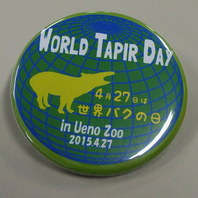 Another 27 April is here, which means that it's now World Tapir Day - the eighth WTD since its inception in 2008. World Tapir Day is being celebrated at events in at least eleven countries in 2015. Ten Japanese zoos have hosted events to mark the occasion, as have zoos in other Asian countries, and across Europe, North America and Australia. Particularly special is always the World Tapir Day celebration in Belize that coincides with the country's National Tapir Day at the Belize Zoo. There will be other events happening, some of which we'll learn about only after the fact. Our Facebook page has the full list of events on it. In Malaysia, the Department of Wildlife and National Parks, PERHILITAN, is running a campaign to draw attention to the problem of tapirs being killed on the country's highways: My personal highlight this year has been this wonderful infographic produced by Peppermint Narwhal Creative: Happy World Tapir Day everybody! We hope you are having a wonderful day.
-- Anthony.  With 2015 World Tapir Day just under four weeks away, it's time for another monthly update. WTD Central (Melbourne, Australia) has been busy working on plans for the future of World Tapir Day, not to mention working many long hours in paid employment (much as it'd be lovely to spend all day working on tapir-related activities, it doesn't actually pay - and one of the central tenets of WTD is that all funds raised through its efforts are donated towards tapir conservation projects). So, without any further ado, here's the latest monthly roundup of tapir news. Tapir reports and news highlights: March 2015 Leading the way in tapir news this month was National Geographic's report on an albino Brazilian tapir that was photographed by a camera trap last year. Photographer Luciano Candisani had heard reports of a local legend among the people living in a protected area of southeastern Brazil's Atlantic rain forest. They reported sightings of a pure-white tapir, so Candisani set up a camera trap in an attempt to photograph it. His good fortune has been great publicity for the threats facing tapir habitat in South America. Malaysian newspaper the Sun Daily published an interesting opinion piece about Malayan tapirs, conservation efforts and the 'loan' of two pandas to the Malaysian Government by its Chinese counterpart. It highlights the massive sums of money spent on ensuring the pandas' loans, and the relative lack of money and engagement in protecting Malaysia's own iconic black and white species.
The ArtSemble Tapi Project (no typo) in Malaysia continues to produce tapirs in preparation for its exhibition at PenangPac to mark WTD this year, with a plan to tour the exhibition following this. The central premise of the Tapi Project is to raise awareness about Malayan tapirs through visiting schools to conduct art workshops. ArtSemble members give a presentation about tapirs and another about contemporary art, before teaching the students how to sculpt tapirs with clay. These tapirs will form part of the art installation to be shown on World Tapir Day. They hope to have around 3,000 tapir sculptures in the installation to represent the number of Malayan tapirs remaining (which may indeed be slightly on the high side). The Facebook page has photos of the workshops and education sessions that ArtSemble has been running recently, with a lot of little tapirs now very much in evidence. We look forward to seeing the results soon! Takepart.com is running an online poll to promote an upcoming Disney film. Whilst the film itself doesn't hold a lot of appeal to this writer, the 'Rare & Ready to Be Saved' bracket game does as it includes the Malayan tapir as one of the endangered species. Essentially a popularity contest, Tapirus indicus has made it into the final four animals and could do with your support to help it win. It's possible to vote once daily for each stage of the knock-out, so show your love of the Malayan tapir with your vote! Each vote also raises a small sum for Conservation International. 2015 World Tapir Day events The WTD Facebook page is starting to amass the events that are being announced around the world to celebrate WTD this year. If you know of an event that is happening - or you are organising one yourself - we'd love to hear from you, and we'll promote it to the wider community. At the time of writing, there are a few events listed, but we're looking forward to being able to announce some others that we know of but aren't quite ready yet to promote. Tapir births It's been a slow couple of weeks and there haven't been recent tapir births around the world of late! -- Anthony.  Welcome to the latest WTD update. It's a little late to be the February one, but as the month is so short, it has slipped into March. In the interest of not delaying it any further, here it is - short and to the point! Tapir reports and news highlights: February 2015 Malaysian online magazine Poskod.my reported on the #tapitapir campaign to raise awareness about the Malayan tapir. During the Malaysian leg of the "1600 Pandas" world tour, a group of Malaysians decided to crash the Panda World Tour with a model of a single tapir, accompanied by a sign: #TapiTapir. The Tapir Specialist Group (TSG) has updated its Tapir Veterinary Manual. It is an updated version of the first Tapir Veterinary Manual published by the IUCN/SSC TSG in 2007. Several veterinarians, biologists, nutritionists, reproduction physiologists and researchers reviewed and made contributions to this document based on their in-situ and/or ex-situ experience with the four tapir species. The 13 Chapters and several appendices in this manual offer valuable information on many important topics for veterinarians working with tapirs, including: handling tapirs in the wild and in captivity, anesthesia protocols, treatment protocols and guidelines for medical and nutritional care. The Manual is available from the TSG website. The Tapir Preservation Fund has launched its new website as part of its efforts to raise tapir conservation efforts. The TPF is a nonprofit organisation that works for the conservation of the four tapir species that inhabit the tropics of Central America, South America, and Southeast Asia. It raises funds to deliver to field projects focused on the conservation of threatened tapir populations. Sheryl Todd has been involved with tapir conservation and education since she first rescued a Brazilian tapir - Stanley K - over four decades ago.. A Malayan tapir had to be rescued from a ditch in Kuantan in Malaysia, having fallen into a ditch. Tapir births Tapir births have been reported at:
-- Anthony  Source: Natasha Rimmington Source: Natasha Rimmington As part of the overhaul of the World Tapir Day website, a blog has been added - welcome to what is now the second post on it! New WTD website and a call to arms The big news from WTD in January has been - not surprisingly - the relaunched website. It has been a long time in concept, a relatively short time in development, but a very long time in need. The original website was developed in early 2008 (in preparation for the first WTD), and whilst there were updates to it, the underlying software and structure proved to be far more complicated to maintain than had been anticipated. Rather than being able to focus on content, a lot of time was spent on keeping it functioning. Over the intervening years, the Facebook page became the primary World Tapir Day presence on the Internet, with our Twitter account playing a secondary role in spreading the tapir conservation message. With the start of the new year, we decided that it was time to finally retire the old site and deliver the website that was planned from the beginning. Instead of focusing on software updates and maintaining databases, the new backend allows us to get on with the important work - World Tapir Day and raising awareness of tapir conservation. This is where you come in. World Tapir Day is a volunteer-run project, and without volunteers, we aren't able to achieve as much as we'd like to be able to. No matter where you live or what your experience is, we'd love to have your involvement. The WTD plan for 2015 involves a lot of website content creation, news updates, media releases and the development of information resources for people and organisations wishing to celebrate World Tapir Day around the world. This involves a range of skills, including graphic design, copywriting and website and social media updating, not.to mention develop creative ideas about how the message of tapir conservation can be promoted to a wider audience. One does not need to be a tapir researcher (but we'd love to have some write a few articles for us!) to be part of the WTD effort - a willingness to contribute and a love of tapirs is all one needs. It you would like to be part of the World Tapir Day experience, please get in contact with us. -- Anthony. Tapir reports and news highlights: January 2015 Heather D'Angelo's article on Mongabay gives an insight into the work of the Lowland Tapir Conservation Initiative (LTCI) that was founded in Brazil in 2008 to conduct long-term research into new insights into the relationship between the health of tapir populations and their environment. The research studied tapir population from two of the four Brazilian biomes: the Pantanal and the Atlantic Forest, and is being used to develop conservation strategies and inform landowners about how best to manage their livestock to reduce the impact on native species. - "Time for a checkup: researchers examine the health of lowland tapirs", 7 January 2015. Malaysian Tourism and Culture Minister Datuk Seri Nazri Aziz called for groups to look into the conservation of another “black and white” animal – the equally endangered Malayan tapir –.at the launch of the World Panda Tour in Malaysia. Since the announcement in mid-2014 of China loaning a pair of pandas to Malaysia, there has been recognition in some quarters of Malaysian society that the high profile panda attracts far more conservation attention than Malaysia's own species. The birth of a Malayan tapir calf at Edinburgh Zoo on New Year's Eve has received extensive media coverage. The male calf has been named Mekong, after the delta river which flows through where the animals are found in the wild, and he is said to be "lively and very distinctive". Malaysian magazine Hype has covered the #tapirtapir campaign that was launched in response to the "1,600 Pandas" exhibition that has been touring Malaysia recently. The appearance of a lone papier mache tapir at the exhibition served as a reminder that tapirs face extinction too. Despite being a protected animal in several regions including Malaysia, the number of tapirs continue to decrease, with perhaps fewer than 2,000 Malayan tapirs remaining. A Brazilian tapir at the Municipal Park Zoo "Quinzinho de Barros" in Brazil has undergone dental surgery to treat teeth that were preventing him from eating (link in Portuguese). |
AboutThe World Tapir Day blog. Posts about World Tapir Day, tapirs, conservation, the environment and random tapir-related topics. Archives
April 2019
Categories
All
|
Website by Tapir Design

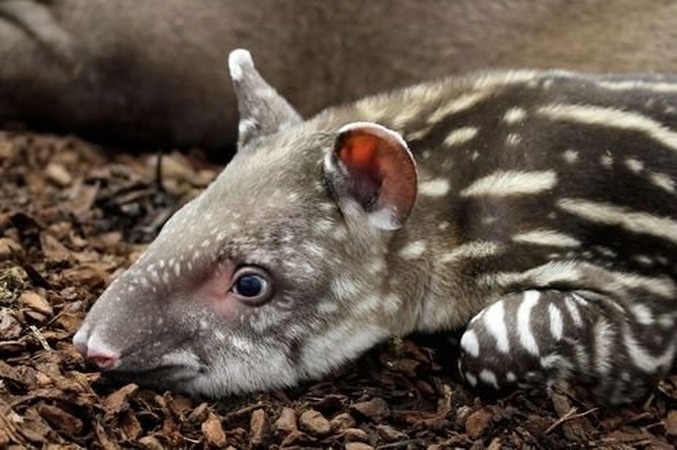
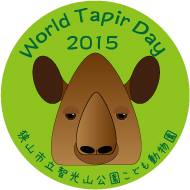
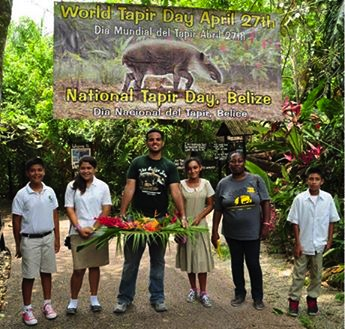
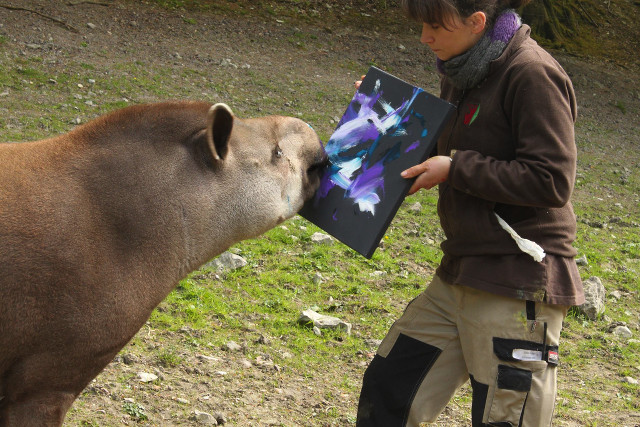


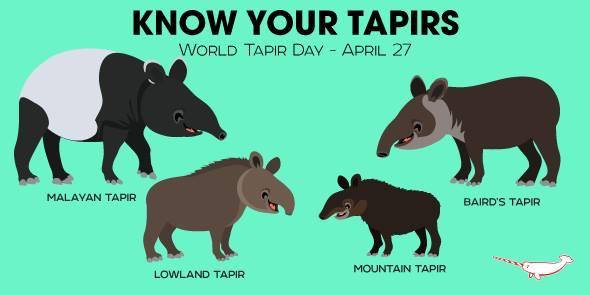

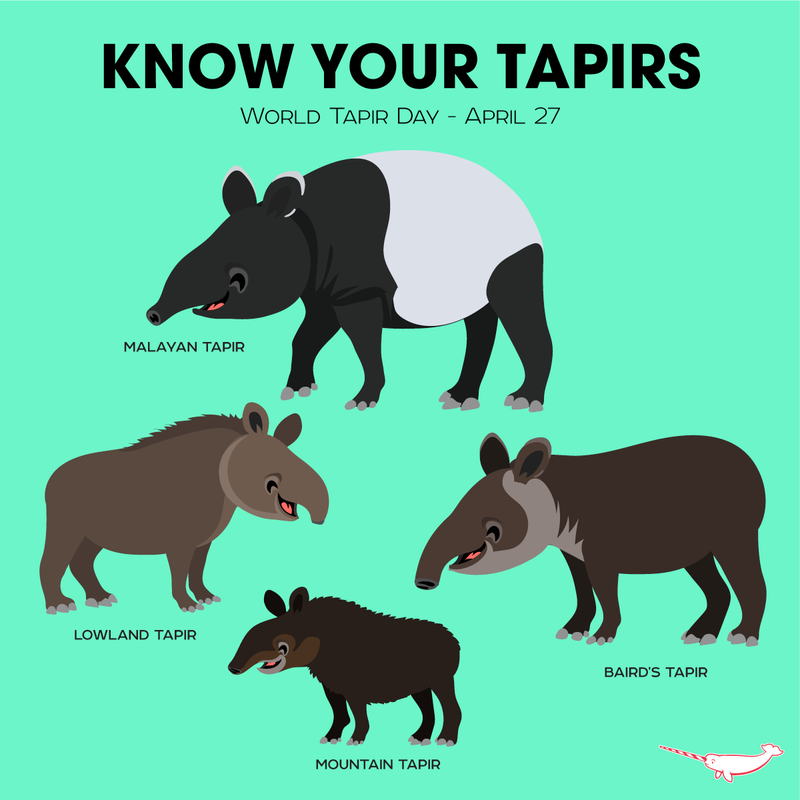
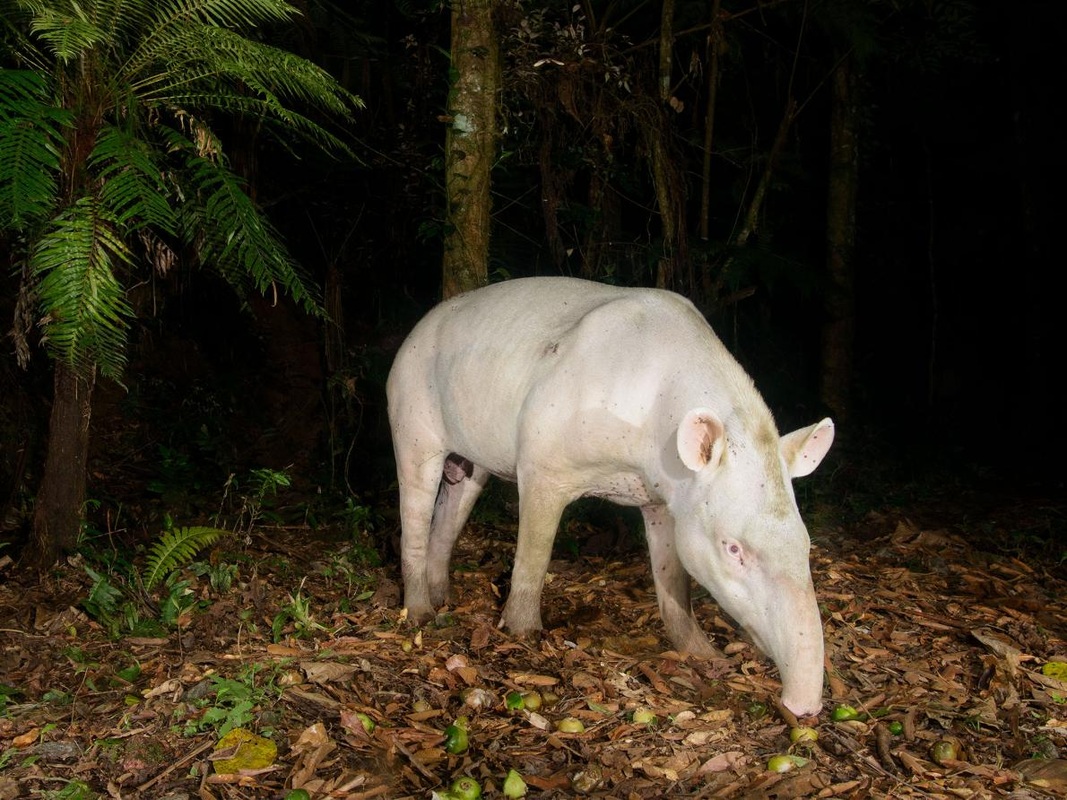
 RSS Feed
RSS Feed